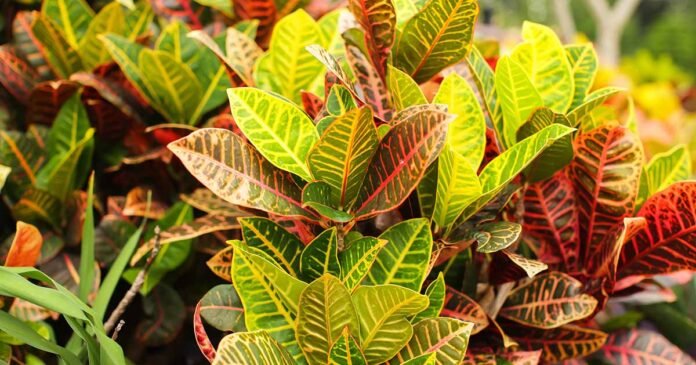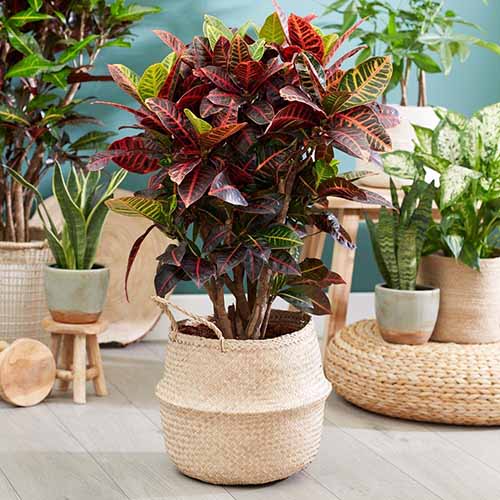Cultivars to Select
There are so many different cultivars to choose from, it’s going to be tough to pick just one!
Here are a few of my favorites:
Banana
‘Banana’ sports elongated, twisting leaves are speckled and veined with yellow.
Dreadlocks
‘Dreadlocks’ has multi-colored, twisting, elongated leaves are accented with red and yellow.
‘Dreadlocks’ is available via Amazon in a six-inch pot.
Petra
This is the most common croton cultivar that you will find in many nurseries and garden centers. Elliptical green leaves are lavishly veined in yellow and red.
‘Petra’ is available from Fast Growing Trees in a six-inch or a three-gallon pot.
Grower’s Choice
If you can’t pick just one, maybe try a Grower’s Choice assortment instead!
Costa Farms Croton Grower’s Choice Assortment, 4-Pack
Four assorted C. variegatum are available via Amazon, in four-inch pots.
Maintenance
Crotons grow slowly. Over time, you may notice that you need to water more frequently or that your croton isn’t as perky as it used to be. If so, may be time to repot.
To be certain, examine the drainage holes. If you see roots poking through, it’s time. Spring is the best time for repotting, as your plant is feeling especially vigorous.


This is where some folks err on the side of generosity, myself included.
When you repot a houseplant, choose the next size up, or in other words, a pot that is only an inch or two wider in diameter than the current container.
A pot that is too deep will encourage excessive root growth, rather than lush foliage.
To repot, first take note of how deep your plant sits in its old pot. You’ll want to replicate this depth in the new one.
Gently ease your plant out of its old pot, dirt and all. Remove most of the old potting mix and tease the roots apart.


Your new pot should be clean and have a drainage hole. Cover the bottom with pea gravel and pour in new potting medium to a depth of about one-third the total depth of the pot.
Center your plant in the new pot, at the same depth it was in the old pot. Holding the plant with one hand, use your other to fill in around it with potting medium.
Don’t fill to the top, but rather, leave a little space to prevent watering spillover.
Tamp down gently, water, and tamp again. Your freshly repotted plant may droop or drop leaves until it regains its composure.





